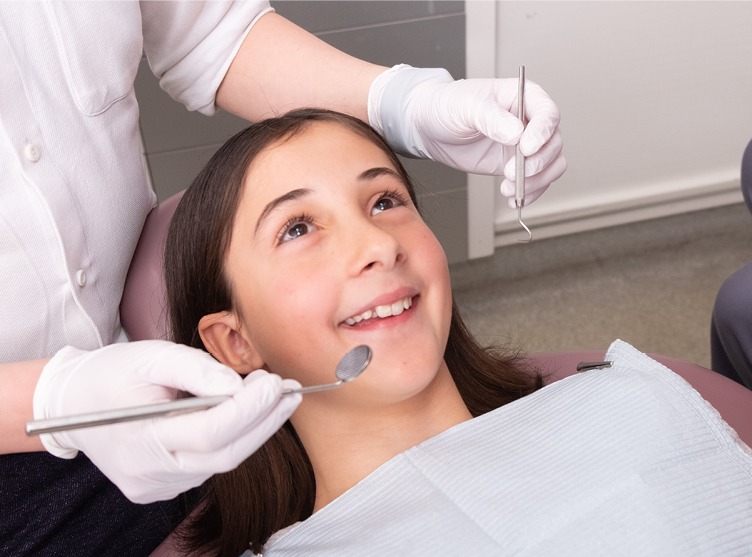Some Known Incorrect Statements About Legacy Orthodontics
Some Known Incorrect Statements About Legacy Orthodontics
Blog Article
Legacy Orthodontics Can Be Fun For Anyone
Table of ContentsThe 6-Minute Rule for Legacy OrthodonticsThe 25-Second Trick For Legacy OrthodonticsNot known Factual Statements About Legacy Orthodontics The Legacy Orthodontics DiariesThe Only Guide for Legacy Orthodontics
In addition, we provide flexible therapy schedules, versatile repayment alternatives and an enjoyable, enjoyable experience.An orthodontist is a dentist educated to identify, prevent, and deal with teeth and jaw irregularities. Orthodontists function with individuals of all ages, from children to grownups.
Malocclusion, or misaligned teeth, can cause dental concerns, including dental caries, gum illness, and tough or agonizing eating. However not every person is birthed with straight teeth. If you have a negative bite or large rooms in between your teeth, you might want to get in touch with a dental practitioner focusing on orthodontic treatment.
Some Known Questions About Legacy Orthodontics.
( Photo Credit Score: DigitalVision/Getty Images) Orthodontists use taken care of and detachable oral devices, like dental braces, retainers, and bands, to alter the setting of teeth in your mouth. Orthodontic treatment is for oral irregularities, including: Misaligned teethBite troubles, like an overbite or an underbiteCrowded teeth or teeth that are too much apartJaw misalignmentThe objective of orthodontic treatment is to improve your bite.
While you might think of orthodontists as primarily for children or young adults who need dental braces, they can fix dental problems at any age. Orthodontists participate in university, dental college, and orthodontic institution.
All orthodontists are dental experts, but not all dental experts are orthodontists. Orthodontic residency programs provide extensive, concentrated guideline for oral professionals. They concentrate on 2 locations: Exactly how to appropriately and securely move teeth How to appropriately lead growth in the teeth, jaw, and faceOnce an orthodontist has completed training, they have the option to end up being board certified.
Not known Factual Statements About Legacy Orthodontics
Malocclusion leads to tooth congestion, a twisted jaw, or irregular bite patterns. Malocclusion is typically treated with: Your orthodontist affixes metal, ceramic, or plastic square bonds to your teeth.
If you have just minor malocclusion, you may have the ability to use clear braces, called aligners, rather than conventional dental braces (https://urlscan.io/result/7d65dac9-0341-459e-8786-85beeca47567/). Some individuals need a headgear to help move teeth into line with pressure from outside the mouth. After braces or aligners, you'll need to wear a retainer. A retainer is a custom-made tool that maintains your teeth in area.
They're most usually made use of on youngsters. They can develop added space in the mouth without needing to pull teeth. If you have a severe underbite or overbite, you may require orthognathic surgery (additionally called orthodontic surgical procedure) to extend or reduce your jaw. Orthodontists make use of cords, surgical screws, or plates to support your jaw bone.
You might need to see an orthodontist if you have: Crowding or not enough area for every one of your teethOverbite, when your top teeth come by your bottom teethUnderbite, when your bottom teeth are too far forwardSpacing or problems with gapsCrossbite, which is when your top teeth fit behind your bottom teeth when your mouth is closedOpen bite or a vertical void between your front bottom and top teethMisplaced midline, when the center of your bottom and published here upper teeth don't align Fixing an oral malocclusion can: Make attacking, eating, and talking easierImprove the symmetry of our face and your overall appearanceEase discomfort from temporomandibular joint problemsDifferent your teeth and make them much easier to cleanse, assisting prevent tooth degeneration or tooth cavities It's typically a dentist that first notifications misaligned teeth throughout a regular test.
Legacy Orthodontics for Beginners

Throughout your very first orthodontic examination, you'll likely have: An oral examPhotos taken of your face and smileDental X-raysPanoramic (360 degree) X-rays of your face and headImpressions to develop mold and mildews of your teethThese examinations will help your orthodontist understand exactly how to wage your treatment. invisalign. An orthodontist is a dentist that's had training to treat your teeth and jaw
An orthodontist is focused on your bite, so something like a cracked tooth would be managed by a dentist. Orthodontists are focused on your bite, or the method your teeth fit together, and the straightness of your teeth.
Ever before asked yourself exactly how celebs constantly appear to have completely lined up teeth? The response typically exists in the skilled hands of an orthodontist. What precisely does an orthodontist do? Orthodontists are oral experts that concentrate on dealing with irregularities in the teeth and jaws. Their experience surpasses simply creating a beautiful smile; it reaches improving your overall oral health and wellness and function.
Fascination About Legacy Orthodontics

, orthodontists have a varied toolkit at their disposal. These reliable dental braces make use of a system of brackets adhered to the teeth and linked by wires.
These removable trays are customized to gradually move the teeth's setting. In cases of narrow jaws, palatal expanders can be utilized to produce area for correct tooth placement.
Report this page